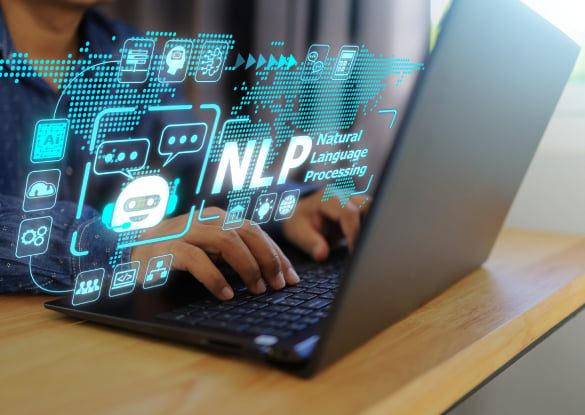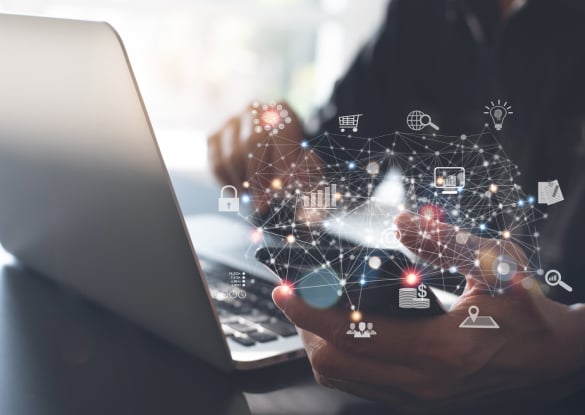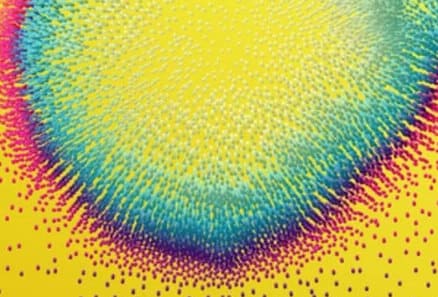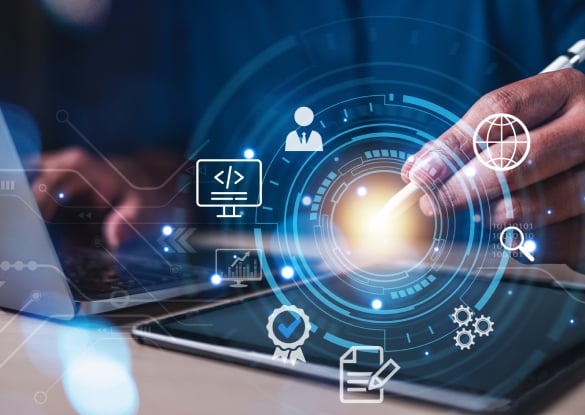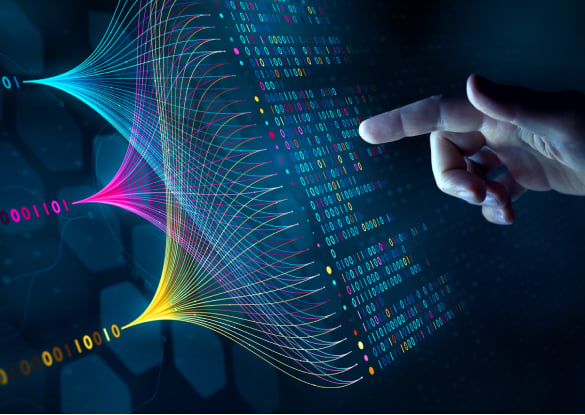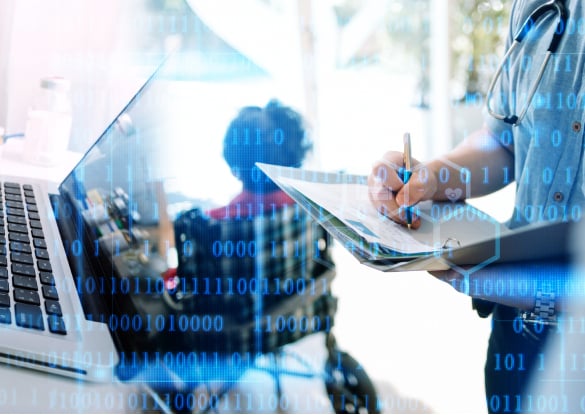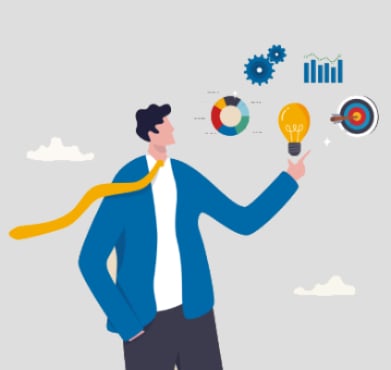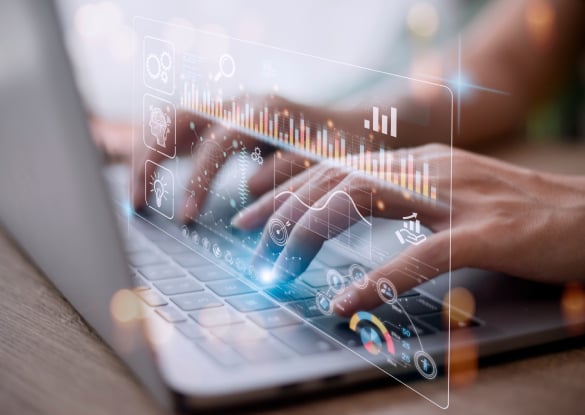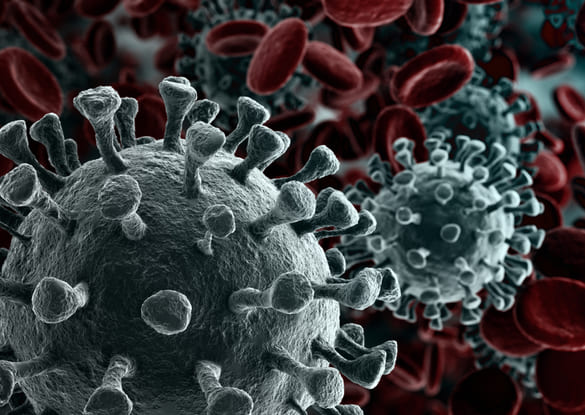As of April 20, there are 2,440,528 confirmed coronavirus cases and 167,592 deaths globally. Currently, the U.S. continues as the hardest-hit country in the world, with 749,666 total cases – 238,831 of which are in the current epicenter, New York. In deciding timelines for reopening economies, officials from affected countries, including Italy, Spain, China, and the U.S., are relying on AI/ML-powered predictive models to determine next best actions. Given the unpredictability and rapidly-changing pandemic climate, AI/ML is necessary to overcome COVID-19 eventually.
In addition to predicting the spread, AI/ML is helping in a variety of other ways. So far, this vast technology has been vital to informing the public, pinpointing contagion risks, and powering research and development (R&D) much faster and more efficiently than during the original SARS outbreak. So far, AI methods are proving useful in informing the public, pinpointing contagion risks, and treatment research and development (R&D) much faster and more efficiently than during the original SARS outbreak.
Coronavirus Outbreak Prediction
-
Identifying Potential Carriers
In-line with early COVID-19 practices in China and Italy, large-scale companies – such as Amazon, Walmart, and Whole Foods – have been using handheld thermometers to measure employees’ temperatures. These scanners use infrared technology to determine those with a fever. However, the effectiveness of these types of digital thermometers – which inspectors point at the forehead – is questionable.
In a simulated study, researchers found that airport screenings could detect just over half of infected individuals. However, there is not yet enough evidence on the effectiveness of screening detection to draw definite conclusions.2
When flying, researchers in favor of these methods note that performing entry screenings at the passenger's destination airport allows them to gather useful contact information in case of an on-flight outbreak. On the contrary, exit screening before a passenger boards a plane can help workers identify and prevent people from flying who were in contact with the virus.2
Critics argue that the equipment can create false negatives where personnel allow the sick to fly. In contrast, false positives can lead them to group healthy individuals among the infected. These people further detest that equipment is too expensive in a time where resources are scarce.3
A certified infrared thermographer told Inside Edition that industrial-grade infrared thermometers are inaccurate for detecting human fevers by up to seven degrees Fahrenheit. He states that these thermometers are intended for pipes, plumbing, and industrial uses. Instead, medical personnel should use medical-grade thermometers. While medical-grade thermometers which touch the forehead directly are more effective, measurements require direct device-to-skin contact, as well as sterilization after each reading.4
Debates about thermometer effectiveness aren’t the only thing developing. The COVID-19 pandemic is also growing faster than your quarantine beard, which may no longer shield you from going undetected.
Abacus reported that SenseTime, a Chinese AI company, developed its facial recognition algorithm to identify those in surgical masks and N95 respirators. However, a Stanford University team was the first to debut this technology in 2017. Their reports state that their breakthrough algorithms that could detect faces with facial hair, glasses, and the like. Such sensitive technology is useful for identifying people on the street with those attributes, and those in areas where mask-wearing is commonplace.⁵
-
Big Data for Disease Tracking
On December 31, Canadian AI platform BlueDot successfully identified the COVID-19 outbreak one week before the Center for Disease Control and Prevention (CDC) did, and ten days before the World Health Organization (WHO). Public health officials rely on government officials for information, which Chinese officials minimally offered. In the future, health officials may rely more on AI/ML providers to determine and report outbreaks when they matter most.
As the pandemic fares on, many are referencing John Hopkins University's online dashboard for confirmed totals regarding case numbers, recoveries, and deaths. The live map displays data specific to each country collated from various data sources, including the local media, government reports, and even Twitter feeds.1
Apps for tracking the virus – such as the "Close Contact Detector"- are fascinating public data tools. This government app allows users to scan Q.R. codes to identify whether they crossed paths with infected people and are at risk for contagion. While reports do not specify how the app works, its developers report support from several government agencies to "ensure accurate, reliable, and authoritative data."6
AI Robots
In late February, China’s National Health Commission reported over 3,300-plus of COVID-19 in Chinese medical staff, Business Insider reported. To slow the spread, Chinese hospitals rolled out robots that automate HCP tasks that are risky and time-consuming. Such duties include disinfecting a room with ultraviolet light, which free up time for HCPs to tend to patients in hospitals without risking infection.7
In March, CloudMinds - a cloud-based systems operator for AI robots - donated 5G-enabled medical assistant cloud robots to a Wuchang, Wuhan hospital to help disinfect, deliver medicine, perform inspections, and measure temperatures. In Guangdong, bots provided patients' food, collected bed sheets, medical waste, and other contaminated materials. The robots could even self-disinfect after patient interactions.9
For supply transportation, facilities have deployed self-driving robots to do the job. In the streets, drones have patrolled public places, and are even capable of spraying disinfectant and identifying people who are ignoring quarantine protocol. Automating these tasks is critical to ensuring professionals can see patients and maintain as much distance as possible from contaminated areas. As hospital populations and the number of infected doctors and nurses skyrocket, we genuinely begin understanding the value of this technology for future outbreaks.
Chatbots are also serving as an additional virus information source. In February, a Japanese startup, Bespoke, announced their mobile app chatbot, Bebot. This chatbot offered the latest information to travelers regarding coronavirus symptoms, prevention, treatments, updates on travel bans, and contact information for government and health services free-of-charge. The bot could also share the latest outbreak news and transmission rates.9
One earnest touch: the bot sympathizes with users. "I'm worried about the coronavirus too," Bebot said when I expressed my concerns for the global well-being. "Is there anything I could help with?"
Amidst an isolation period, a kind-hearted robot is oddly reassuring.
![]() Learn More - How Healthcare AI Chatbots Are Transforming The Patient Journey
Learn More - How Healthcare AI Chatbots Are Transforming The Patient Journey
Vaccine Research and Development
 AI for rapid treatment development
AI for rapid treatment development Virus resurrection via mail-ordered DNA
Virus resurrection via mail-ordered DNA Vaccine rapid response platforms
Vaccine rapid response platforms-
AI for Rapid Treatment Development
Research using AI may fast-track the treatment for the coronavirus.
Researchers are using advanced genome sequencing to conduct SARS-CoV-2 research in a fraction of the time and price as the 2003 SARS-CoV outbreak required. During the original SARS outbreak, scientists needed five months to sequence the virus's genome. Comparatively, researchers sequenced the SARS-CoV-2 genome within two weeks of the WHO receiving virus reports. Quickly, they analyzed this data to trace the coronavirus back to November. In turn, they created the first diagnostic tests within a matter of days.10
A biotech company, Insilico Medicine, is narrowing down molecules that may treat the virus and hopes to test potential treatments in April. CEO Alex Zhavoronkov told the Wall Street Journal AI methods" to develop seven small molecules that may treat the coronavirus. And, they hope to begin testing seven solutions currently in production next month. To do so, they employed AI two techniques: generative adversarial networks (GANs) and reinforcement learning. In four days, the AI algorithms generated 100,000 unique molecules, narrowed them down to 100, and then chose the seven to create.11
Another biotech company, VIR, is "weeks or months" away from having the right antibodies to test created treatments, VIR Chief Executive George Scangos told WSJ. The company is considering several treatment avenues. He added that these methods use machine learning algorithms to help scientists predict the effect of chemical structure changes on an antibody's potency, as well as manufacturability. They include:
- Developing antibodies which kill viruses before attacking cells,
- Chemical compound creation to disable gene functions in either infected human cells or the virus to prevent viral replication.11
-
Virus Resurrection via Mail-Order DNA
Using the COVID-19 genome sequence, scientists can engineer synthetic versions of the novel coronavirus to conduct research sooner. Doing so requires mail-ordering the right genes, stitching them together, copying the coronavirus genome, and injecting cells to activate the virus. In turn, they can identify rats' reactions to treatments, discover vaccines, and research mutations, whereas obtaining infections from affected countries would have otherwise posed difficulty.11
Due to fears of bioterrorism, companies are closely monitoring mail-order DNA customers. To restrict access, select US companies are comparing incoming DNA orders with a 60-count germ-and-toxin database of "select agents." This way, they can identify sketchy orders and restrict non-authorized labs from ever obtaining the DNA to resurrect the viruses.11
Scientific R&D company Battelle's software ThreatSEQ is one company that can compare DNA orders with the select agent database. According to Senior Research Scientist Craig Bartling, the company tested its effectiveness by simulating a SARS-CoV2 copy order. In turn, the software flagged both the individual genes and the full virus at "the highest threat level" for its high similarity to the original SARS-CoV, Bartling explained.12
-
Vaccine Rapid Response Platforms
Currently, scientists at the National Institutes of Health (NIH) are deploying "vaccine rapid response platforms." These high-tech methods are presented in the early stages, and may drastically reduce vaccine development time.13
Typically, vaccines involve scientists injecting samples of chemically inactivated viruses into the body. When the immune system recognizes the virus as an antigen – aka, a foreign invader – it teaches the body to fight the infection.13
Instead of injecting antigens directly into the body, vaccines developed using vaccine rapid response platforms send instructions to the body's cells, which then produce the antigen proteins needed to fight its target virus. These instructions come in RNA or DNA form, which are molecules containing codes to build proteins.13
Melanie Saville, Director of the Vaccine Research and Development at the Coalition for Epidemic Preparedness Innovations (CEPI), told WSJ that vaccines typically take years to hit the clinic – from identifying the virus sequence to vaccine development, to pre-clinical testing to manufacturing, and finally, to the clinic. During the original SARS outbreak, the initial vaccine took about 20 months to hit clinics. According to Saville, clinics could use these new technologies to develop a vaccine within just 16 weeks.13
Detection
AI-based software is analyzing CT lung scans to detect SARS-CoV-2 rapidly.
In early February, the Alibaba DAMO Academy developed a system that they claim can distinguish the virus from regular viral pneumonia with up to 96% accuracy. Additionally, the system can diagnose much faster than a human can via computerized tomography chest scans.14
CT scans produce 300-400 images, which takes even experienced doctors roughly 15 minutes to analyze and provide a clinical diagnosis. However, this software analyzes scans within 20-30 seconds, allowing doctors to see more patients when time is of the essence.14
Along with diagnostics, the system provides treatment response tracking in confirmed cases.
"Hospitals in heavily affected regions like Wuhan might send us CT scans of the same, often confirmed case every two to three days and we'll use our AI system to detect signs of improvement, such as the reduction of white mass in the lungs," said DAMO's AI-algorithm expert Xu Minfeng.14
But AI is Not Without Its Flaws.
Recently, YouTube joined corporate combat against the coronavirus through the power of AI. In their blog post announcement, they transparently shared why switching to AI moderators may result in videos mysteriously vanishing.
According to the post, ML models help sift through potentially harmful content before sending it for a human to review. For employees to work remotely, algorithms removing potentially violative content without human review will take up the legwork to maintain performance speeds.
"As we do this, users and creators may see increased video removals, including some videos that may not violate policies," states the post. "In some cases, unreviewed content may not be available via search, on the homepage, or in recommendations."15
Considering how creators upload roughly 30,000 hours of content each hour, YouTube's ability to employ AI to continue remotely running the platform is nonetheless remarkable.16
Bottom Line: Maintain Social distancing and stay strong.
The novel coronavirus is spurring vast innovations in technology. While this advancement will be paramount to dealing with future health crises, our best source of slowing the spread is to continue following social distancing rules, listen to reliable health sources like the Centers for Disease Control and Prevention (CDC) and the WHO, and stay inside.
Although countries are in the planning stages of reopening their economies, experts suggest this could be our new “normal” for a while.
Recently, researchers who ran prediction models reported that intermittent or prolonged social distancing might be required until 2022 in the absence of a vaccine.¹⁷ Whether or not this ends up being the case, ML models are becoming standard in determining how to take precautions best moving forward.
Unfortunately, there are no AI models that can do the hard work for us. Social distancing remains the most effective “technology” we can provide. These models do, however, vastly fast track and improve the efficiency and accuracy methods to find vaccines, flatten the curve, and the like.
Since history is repeating itself à la the roaring 20's and possibly the Great Depression, here's a thought-provoking history lesson:
During the devastating 1918 Spanish flu, people in St. Louis began social distancing just two days after the initial infection. Philadelphia, on the other hand, waited two weeks. In the end, the Philadelphia deaths per capita Spanish flu deaths were more than double that of St. Louis.18
That right there is the proof-laced pudding. Please, continue to hold out and do your part to slow down the COVID-19 virus spread.
And remember - the only thing harder than socially distancing yourself until further notice is struggling for a coronavirus test before sitting in complete isolation. And the only thing worse than your isolation is forcing your friends and family whom you infected into theirs. Or worse, you send loved ones spiraling into an illness from which they cannot recover.
![]() Click Here To Learn About Axtria's AI/ML Capabilities.
Click Here To Learn About Axtria's AI/ML Capabilities.
SOURCES:
- John Hopkins University. Coronavirus COVID-19 global cases by the Center for Systems Science and Engineering. John Hopkins University Coronavirus Research Center, published online 22 January 2020, available at https://gisanddata.maps.arcgis.com/apps/opsdashboard/index.html?fbclid=IwAR3prf7gRuznOnGiv_wZpjhVQ-YZAtQcVJYorx1Yfu3Tutt4nn2dUQaGbyo#/bda7594740fd40299423467b48e9ecf6 (accessed 20 April 2020).
- Quilty BJ, Clifford S, Flasche S, et al. effectiveness of airport screening at detecting travelers infected with novel coronavirus (2019-nCoV). Eurosurveillance, published online February 2020; 25(5) available at https://www.eurosurveillance.org/content/10.2807/1560-7917.ES.2020.25.5.2000080 (accessed 17 March 2020).
- Rauhala E. Some countries use temperature checks for coronavirus. Others don't bother. Here's why. The Washington Post, published online 14 March 2020, available at washingtonpost.com/world/coronavirus-temperature-screening/2020/03/14/24185be0-6563-11ea-912d-d98032ec8e25_story.html (accessed 15 March 2020).
- Inside Edition. Expert says best to use medical grade thermometers when checking for fever. Inside Edition, published online 2020, available at insideedition.com/media/videos/expert-says-best-to-use-medical-grade-thermometers-when-checking-for-fever-58346 (accessed 15 March 2020).
- Borak M. Wearing a mask won't stop facial recognition anymore. Abacus, published online 23 February 2020, available at abacusnews.com/tech/wearing-mask-wont-stop-facial-recognition-anymore/article/3051388. (accessed 15 March 2020).
- National Health Commission of the People's Republic of China. China introduces novel coronavirus close contact detection app. Xinhua, published online 10 February 2020, available at en.nhc.gov.cn/2020-02/10/c_76416.htm (accessed 16 March 2020).
- China Daily Group. Lei Z. 3,000 medical workers infected with novel coronavirus: Researchers. China Daily, published online 17 February 2020, available at chinadaily.com.cn/a/202002/17/WS5e4a9af2a3101282172782b3.html (accessed 18 March 2020).
- Wilkins A. A robot hospital has opened in China to treat coronavirus patients. Metro, 10 March 2020, available at https://metro.co.uk/2020/03/10/robot-hospital-opened-china-treat-coronavirus-patients-12375542/ (accessed 16 March 2020).
- Government Technology & Service Coalition. AI chatbot assists travelers during novel coronavirus crisis. Homeland Security Today, published online 8 February 2020, available at hstoday.us/industry/ai-chatbot-assists-travelers-during-novel-coronavirus-crisis/ (accessed 15 March 2020).
- Hickey A. Coronavirus research highlights AI, data applications in biotech. Morning Brew, published online 9 March 2020, available at morningbrew.com/emerging-tech/stories/2020/03/09/coronavirus-rd-highlights-ai-data-applications-biotech (accessed 16 March 2020)
- Council J and Gormley B. Biotech companies tap AI to speed path to coronavirus treatments. The Wall Street Journal, updated 6 March 2020, available at wsj.com/articles/biotech-companies-tap-ai-to-speed-path-to-coronavirus-treatments-11583451564?utm_source=morning_brew (accessed 16 March 2020).
- Regalado A. Biologists rush to re-create the China coronavirus from its DNA code. MIT Technology Review, published online 15 February 2020, available at technologyreview.com/s/615231/biologists-rush-to-re-create-the-china-coronavirus-from-its-dna-code/ (accessed 17 March 2020).
- WSJ Video. Coronavirus outbreak tests new vaccine development strategy. The Wall Street Journal, published online 13 February 2020, available at wsj.com/video/coronavir us-outbreak-tests-new-vaccine-development-strategy/79454E57-8826-4593-8DE8-1BD7573848A6.html (accessed 17 March 2020).
- Li C. How DAMO Academy's AI system detects coronavirus cases. Alizila, published online 10 March 2020, available at alizila.com/how-damo-academys-ai-system-detects-coronavirus-cases/ (accessed 16 March 2020)
- Protecting our extended workforce and the community. YouTube Creator Blog, published online 11 March 2020, available at https://youtube-creators.googleblog.com/2020/03/coronavirus-update-on-creator-support.html (accessed 16 March 2020).
- Clement J. YouTube: Hours of video uploaded every minute 2019. Statista, published online 9 August 2019, available at statista.com/statistics/259477/hours-of-video-uploaded-to-youtube-every-minute/ (accessed 16 March 2020).
- Kissler. M. S, Tedjjanto C., Goldstein E. et. al. Projecting the transmission dynamics of SARS-CoV-2 through the postpandemic period. American Association for the Advancement of Science. Published online 14 April 2020, available at https://science.sciencemag.org/content/early/2020/04/14/science.abb5793 (accessed 16 April 2020)
- Coren MJ. This Chart of the 1918 Spanish flu shows why social distancing works. Quartz, published online 11 March 2020, https://qz.com/1816060/a-chart-of-the-1918-spanish-flu-shows-why-social-distancing-works/ (accessed 17 March 2020).

